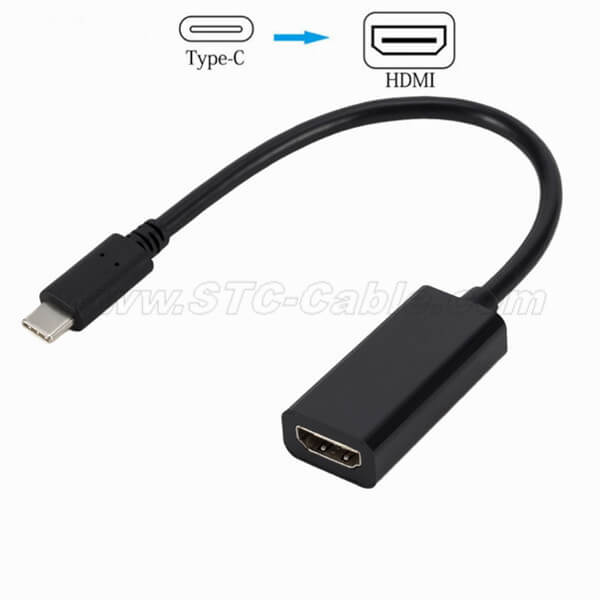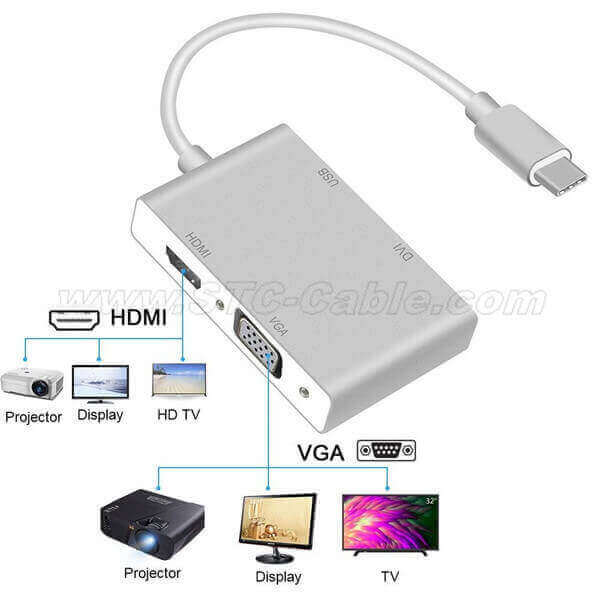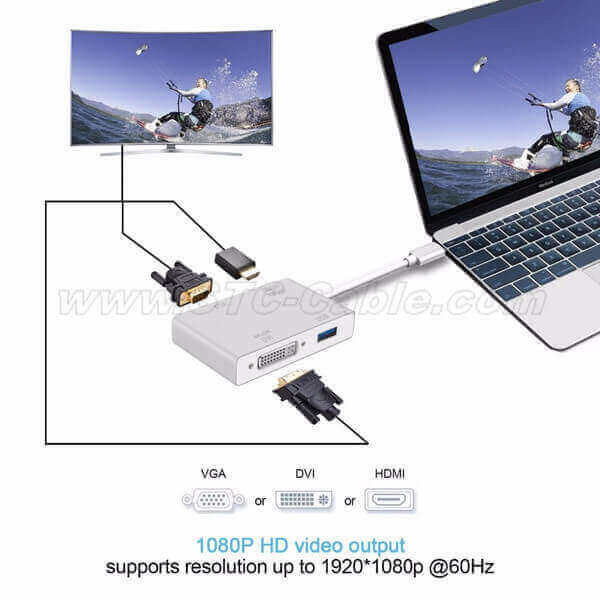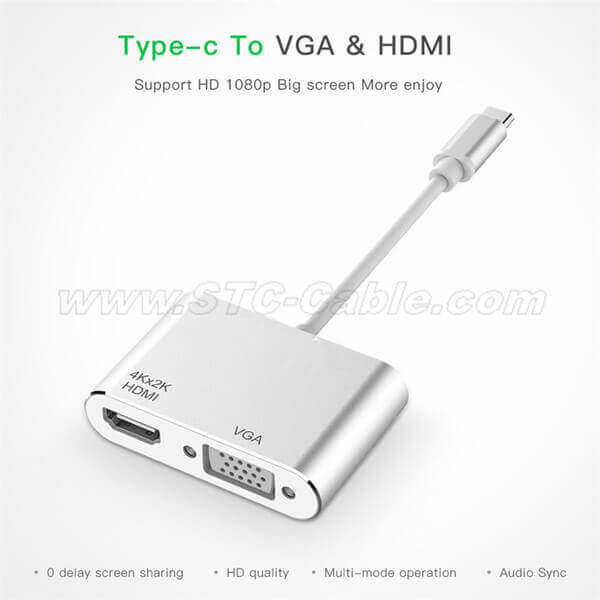According to Strategy Analytics, global mobile computing device shipments have grown steadily between 2016 and 2021, with a compound annual growth rate of 2%. However, shipments of mobile computing devices with DisplayPort (DP) interfaces will have a compound annual growth rate of 36% between 2016 and 2021, and a growth rate of 29% in 2021.
This growth was mainly due to the shipment growth of mobile computing devices benefiting from USB type-C interface to 76% in 2021 and a compound growth rate of 52% in 2016-2021. Mobile phone shipment data for the DP interface will be higher. For example, the Samsung S8 is such a mobile phone, its shipment volume is very high, may reach several million, and may reach billions of shipments in the next five years.
According to Strategy Analytics, 5% of tablets, laptops and mobile phones shipped in 2016 are DP interfaces or support DP standards, and this number will increase to 29% in 2021.
Recently, Jim Choate, Compliance Project Manager of the Video Electronics Standards Association (VESA), revealed at the press conference that this standard was quickly adopted with several factors, namely high-quality video (4K Ultra HD or higher resolution). Demand continues to grow; virtual reality and augmented reality (VR/AR) applications; the adoption of USB-C and Thunderbolt 3 interfaces continues to increase; mobile devices demand for docking. "The Thunderbolt 3 interface natively supports the DP interface. If you have Type-C or Thunderbolt 3, you can support the DP standard," he said.
What new features are available in DisplayPort 1.4?
DP1.4 is the latest DP standard. It adds new features and functions such as Display Stream Compression (DSC), Forward Error Correction (FEC), and Enhanced Multi-Stream Transport (MST).
All versions of DP offer backward compatibility and new optional features. The new chip design will support HDR3, and other new features are still under development.
The most important feature added by DP1.4 is HDR3, which reaches 8.1Gbps. The maximum resolution supported is 5K3K and 8K4K, and the total available data transmission rate reaches 25.92Gbps.
The DP standard has been enhanced to simplify the application of the DP standard.
In addition to the USB Type-C connector, the DP interface can also be used as part of the Thunderbolt interface, VR/AR, VESA embedded DP standard (eDP), VESA mobile device DP standard (MyDP), and docking station interface. .
Like the previous DP version, DP1.4 continues to support DP-specific features such as multi-stream multi-monitor, HD audio format, adaptive synchronization, protocol converters that support VGA, DVI, HDMI, and compatibility with sub-micron processes. The low voltage AC coupling interface makes integration easier.
In order to promote the promotion of the DP1.4 standard, VESA has been carrying out related certification work. Early certification for HDR3 chips has been completed, and final product certification has begun in the second half of 2016. DP1.4 will be used on native DP devices and devices using the USB Type-C interface with DP Alt mode.
The DP1.4 Compliance Test Guide is under development to better support testing of new features such as HBR3 and DSC.
Compliance test specifications for the link layer and the physical layer are under development and will be released in the second half of 2017.
The compliance test for DP1.4 HDR3 is in progress and the test tools and compliance test specifications are being updated. “We conducted interoperability testing in Taiwan in June. Early product certification programs are being used by early adopters. We have selected several chipsets that can be used as a reference, including AMD, Nvidia, Realtek, and Mstar. ”
DP over USB-C certification
The first version of the DP Alt Mode standard was released on September 22, 2014, with the goal of supporting the DP standard using the USB Type-C interface.
The USB Type-C is very small and can be used with ultra-portable devices such as mobile phones and tablets. In addition, USB Type-C supports forward and reverse insertion, and data processing can reach 10Gbps. The USB Type-C also supports USB power supply up to 100W. It also supports DP Alt Mode.
From the pin definition, the USB Type-C interface supports up to four channels for use by the DP standard.
The USB Type-C can charge the device directly, and can be connected to the phone through the docking station.
For example, the Samsung S8 can be directly charged via the Type-C interface or connected to the docking station. The docking station can provide a lot of conversion interfaces, support interfaces such as HDMI, and can be charged. Of course, the technical functions related to the USB connection can be realized. With this function, the mobile phone can be connected to the keyboard and mouse.
Such docking solutions are common in the mobile phone industry because they increase productivity, connect the mouse and keyboard to the phone, and connect to the display.
In addition, the device can be connected to the USB Type-C at one end, and the VGA standard DP, DVI and HDMI interfaces are provided on the other end.
DP over Type-C's Compliance Testing and Certification (CTS) 1.0 was released in January 2017. DP Alt Mode related product certification is already in progress.
For the DP Alt Mode authentication policy, the USB Type-C to HDMI converter needs to meet HDMI 2.0. However, because the HDMI 2.0 standard is not yet popular, it will not be satisfied until 2018.
The DP1.4 offers a significant increase of over 50% in performance, supporting 4K/120Hz, 8K/30Hz and 2 channels of 4K/60Hz in DP Alt Mode.
“DP over USB-C is a very revolutionary standard that is ideal for portable devices, with many functions, including data transfer, display and charging functions, through one interface.” “We have already in January 2017 DP Alt Mode and CTS have been released and are now being tested and certified for products using DP Alt Mode. Such testing and certification is very extensive, as DP Alt Mode supports many features and functions, so all aspects of testing are required. And the certification passed smoothly, the manufacturer needs to work closely with the test lab to comply with the relevant standards and requirements. Now Amazon buyers have many problems in evaluating the products, because the manufacturers of these products do not comply with the requirements of DP Alt Mode. Therefore, the product will have various problems."
The advantage of DP Alt Mode is "voice + USB data transmission & charging" and the cost is not high
For the development of DP, Huang Jia, the digital test project manager of Allion, added that the initial DP1.1 support bandwidth is only 2.7Gbps, which is equivalent to 2K. By the subsequent DP1.2, the bandwidth doubled to 5.4 Gbps, while supporting 4K/60 Hz, and the MST function was added. Simply put, the MST is the source and connector, driving more than two displays through the series connection of cables. This year's DP1.4 bandwidth test was up to 8.1Gbps. With DSC data compression technology, resolution is up to 8K/60Hz while supporting new HDR technology. HDR is the contrast of color and darkness to restore the contrast of the real world. This contrast can be seen visually, so it is also the visual experience of the current DP display products. For certification testing, it is backward compatible. In other words, if the terminal product announces support for DP1.4, it needs to test DP1.2/1.1 down.
For DP Alt Mode, it is implemented through the Type-C interface, that is, if the terminal product has a Type-C interface and supports DP Alt Mode, the video and USB data can be simultaneously transmitted through the Type C interface, and It can achieve two-way charging. This basically eliminates the hassle of carrying multiple chargers and data lines.
Currently, LG, Google and other mobile phones and Dell monitors have successfully used DP Alt Mode technology. Other electronic products such as VR and car navigation systems are also paying attention to the development of DP - some products have actually used DP Alt Mode. So in the near future, DP Alt Mode will be used in a wider range of products, and its business opportunities are immeasurable.
The reason why so many vendors tend to choose DP Alt Mode is that it has a very obvious advantage. First of all, HDMI 1.4 can transmit voice, but there is no way to transmit USB data, and there is no way to charge. Then, MHL's current market share is very low, probably because it is applicable in a narrow range. The popular TBT3 is also implemented through the Type-C interface, and its propagation speed is faster than DP, but its cost is high, and its specification is relative to the public, import will be more difficult. So DP Alt Mode is everyone's choice.
Send your message to us:
Post time: Jun-19-2019




